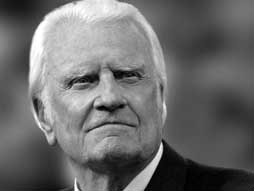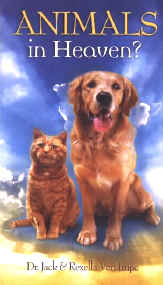In The Man in the High Castle, an alternate history novel by American writer Philip K. Dick, published and set in 1962, events takes place 15 years after a different end to the Second World War, and depict intrigues between the victorious Axis Powers – primarily, Imperial Japan and Nazi Germany – as they rule over the former United States, as well as daily life under totalitarian rule. A television series was loosely adapted from the book and ran for four seasons from January 2015 until November 2019.
In a similar vein, The Plot Against America is a novel by Philip Roth published in 2004. It is an alternate history in which Franklin D. Roosevelt is defeated in the presidential election of 1940 by Charles Lindbergh. Adapted for television as a six-part miniseries that aired in March and April 2020, The Plot Against America imagined an alternate American history told through the eyes of a working-class Jewish family in Newark, New Jersey, as they watch the political rise of Lindbergh, an aviator-hero and xenophobic populist.
The fascination with alternate timelines is not limited to science fiction writers. Historians have been known to wonder if the 1963 assassination of President John F. Kennedy, in ending Camelot, changed the course of history for the worse? It’s a popular, if not almost universal view, that it did. But historian David Hackett Fischer, in his 1970 book, Historians’ Fallacies: Toward a Logic of Historical Thought, warns of the dangers of counterfactual historiography, which extrapolates a timeline in which a key historical event did not happen or had an outcome which was different from that which did in fact occur. Had Kennedy lived would the United States have exited Vietnam closer to 1964 than 1975? Would Lyndon Johnson’s landmark Civil Rights Act of 1964 have passed so soon under JFK? We can only wonder.
As Kennedy’s presidential limousine, a modified 1961 Lincoln Continental four-door convertible, turned off Main Street at Dealey Plaza around 12:30 p.m. Central Standard Time on Friday, Nov. 22, 1963, three shots rang out as the motorcade passed the Texas School Book Depository. If you were born in 1957 or earlier, you have a highly detailed and exceptionally vivid flashbulb memory snapshot of that moment and where you were and what you were doing. I was in my Grade 1 class in Oshawa, Ontario here in Canada at St. Christopher Separate Elementary School on Annapolis Avenue that day.
Secret Service Agent William Greer, 54, the limousine driver, sped to Parkland Hospital where Father Oscar Huber, a 70-year-old Vincentian priest from Holy Trinity Catholic Church, who had been watching the presidential motorcade, having walked the three blocks, arrived to administer the sacrament of last rites (extreme unction) to the mortally wounded 46-year-old president.
Just two hours and eight minutes after Kennedy was shot, Vice-President Lyndon Baines Johnson (LBJ), who was also in Dallas, riding in a car behind the president with his wife, Lady Bird Johnson, and Texas Senator Ralph Yarborough, was sworn in as president of the United States aboard Air Force One at Love Field, as the presidential plane’s four jet engines were being powered up, by Judge Sarah Tilghman Hughes, a federal judge for the United States District Court for the Northern District of Texas, the only woman in U.S. history to have sworn in a United States president, a task usually executed by the chief justice of the United States, using a Roman Catholic missal taken from a side table in Kennedy’s airplane cabin, which Larry O’Brien, a member of JFK’s inner circle as special assistant to the president for congressional relations and personnel, is said to have mistakenly taken to be a Bible, as it was bound in calfskin and embossed with a crucifix. Would O’Brien, a practicing Irish Roman Catholic, mix up a missal with a Bible in the chaos of the moment? Perhaps. Or maybe he thought it was a perfectly natural thing, given his own religious background, to have Johnson, a Stone-Campbell Movement Disciple of Christ adherent, sworn in with a missal.
Also, while the oath should have been, according to Article II, Section 1, Clause 8 of the United States Constitution, “I do solemnly swear that I will faithfully execute the Office of President of the United States, and will to the best of my ability preserve, protect and defend the Constitution of the United States,” Hughes said in 1968 she also mistakenly added, “So help me God” to the end of the oath she read on the plane: “Every oath of office that I had ever given ended up with ‘So help me God!’ so it was just automatic that I said [it].”
While conspiracy theories about Charles Harrelson, actor Woody Harrelson’s father, being one of the “three tramps” on the grassy knoll – a second shooter in Dallas – along with two other shadowy figures, Charles Rogers and Chauncey Holt, continue to have some currency, it appears the boxcar tramps actually were Gus Abrams, Harold Doyle and John Gedney, and that Lee Harvey Oswald, as the Warren Commission concluded, acted alone. Harrelson, however, was later convicted of the assassination of U.S. federal district court Judge “Maximum John” H. Wood, Jr., shot dead in the parking lot outside his San Antonio, Texas townhouse on May 29, 1979. Harrelson, 69, died March 15, 2007, incarcerated at Supermax, the United States’ most secure federal penitentiary in Florence, Colorado.
It was also on Nov. 22, 1963 that C.S. Lewis, the former atheist-turned-Anglican apologist died, as did Aldous Huxley, author of the dystopian novel Brave New World, which anticipated developments in reproductive technology, sleep-learning, psychological manipulation and operant conditioning, leading Modern Library in 1999 to rank it fifth on its list of the 100 best English-language novels of the 20th century. Kennedy, Lewis and Huxley all died within hours of each other, In January 1982, Reformed Protestant Calvinist-turned Catholic apologist Peter Kreeft, a professor at Boston College since 1965, published Between Heaven and Hell: A Dialog Somewhere Beyond Death with John F. Kennedy, C.S. Lewis & Aldous Huxley, where he imagines the three discussing life after death and the claims of Christ.
The deaths of Kennedy, Lewis and Huxley came one day after CBS aired what is believed to be the first major U.S. news report to feature The Beatles on Thursday, Nov. 21, 1963, which you can watch here: https://www.youtube.com/watch?v=z-sI-e-eJwQ
Steve Gillon, host of the new History Channel podcast 24 Hours After: The JFK Assassination, says the assassination of JFK is the only time when the nuclear codes were temporarily lost.
“The president always has a military aide who carries an attache with all the nuclear codes,” he says. “He was in a backup car, and in all the chaos of rushing to the airport, the aide got lost. The codes were soon reunited with the president, but I think that’s the only time I know of in the nuclear age where, if the president had wanted to launch a nuclear strike, he would not have been able to because he wouldn’t have access to the codes.”
The president is always followed by the briefcase, the so-called “nuclear football,” and a military aide wherever he goes. It has joined every president when they are away from the White House since the Cuban Missile Crisis in October 1962. The football is carried to allow the president to be able to launch a nuclear strike at short notice if needed.
It originally got its name from an Eisenhower-era nuclear war plan, code-named ‘Dropkick’, and was created to make sure a nuclear war option was always near the president. There are three of the bags in total, one is with the president, one with the vice president and the other kept safe in the White House.
“The ‘ball carriers’ who look after the cases also carry Beretta pistols and are authorized use deadly force against anyone who tries to take it.
Little is made public about what is inside the cases and it regularly changes. A small antenna that pokes out the top of the case means it likely contains a satellite phone.
There is also a 75-page book that informs the president of his options for a nuclear strike, with another highlighting places he could hide during a nuclear war.
A ten-page folder on contact details for military leaders and broadcasters sits next to a sealed laminated card known as the Biscuit.
This looks like a large credit card and shows letters and numbers, with the president having to memorize where on it sits the Gold Code.
In the event of a nuclear strike, the commander-in-chief of the U.S. armed forces will say the code down the phone to the National Military Command Centre in Washington D.C.
Despite the bags being kept at the White House when the president is in residence, it is widely thought he carries a card with the launch code on him all the time.”
Ohio-class ballistic missile submarines (SSBNs) sail somewhere off Norfolk, Virginia and San Diego, with North American Aerospace Defense Command (NORAD) personnel at the Cheyenne Mountain Complex, near Colorado Springs, Colorado, and the U.S. Strategic Command, (USSTRATCOM), the global warfighting command at Offutt Air Force Base in Omaha, Nebraska.
In the event of a national emergency, the Federation of American Scientists (FAS) says, a series of seven different alert conditions (LERTCONs) can be called. The seven LERTCONs are broken down into five defence conditions (DEFCONs) and two emergency conditions (EMERGCONs). Defence readiness conditions (DEFCONs) describe progressive alert postures primarily for use between the Joint Chiefs of Staff and the commanders of unified commands. DEFCONs are graduated to match situations of varying military severity, and are numbered 5,4,3,2, and 1 as appropriate. DEFCONs are phased increases in combat readiness. In general terms, these are descriptions of DEFCONs:
EMERGCONs are national level reactions in response to ICBM (missiles in the air) attack. By definition, other forces go to DEFCON 1 during an EMERGCON.
During the Cuban Missile Crisis, the U.S. Strategic Air Command was placed on DEFCON 2 for the first time in history, while the rest of U.S. military commands (with the exception of the U.S. Air Forces in Europe) went on DEFCON 3. On Oct. 22, 1962 SAC responded by establishing Defense Condition Three (DEFCON III), and ordered Boeing B-52 Stratofortress long-range, subsonic, jet-powered strategic bombers on airborne alert. Tension grew and the next day SAC declared DEFCON II, a heightened state of alert, ready to strike targets within the Soviet Union.
You can also follow me on Twitter at: https://twitter.com/jwbarker22













